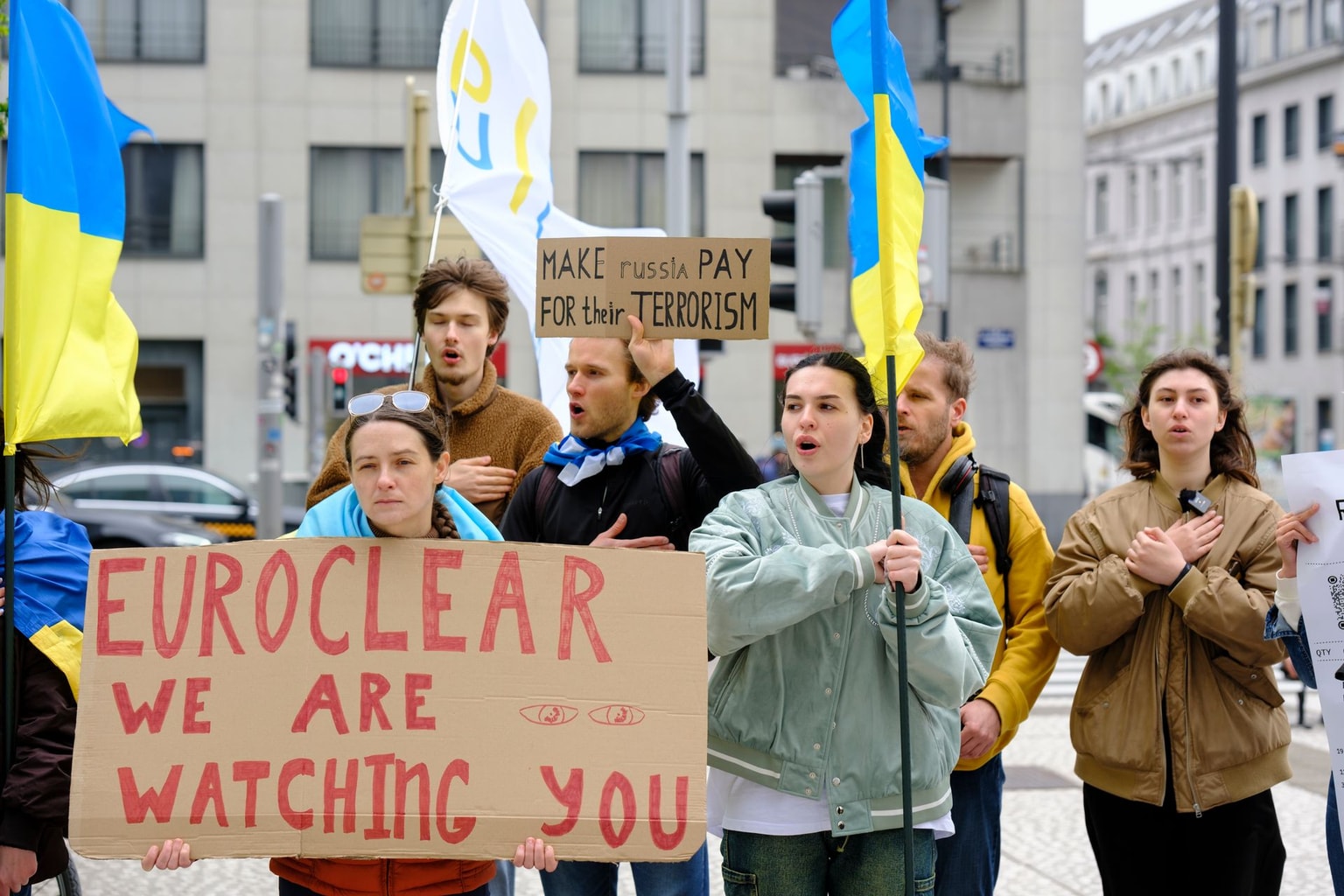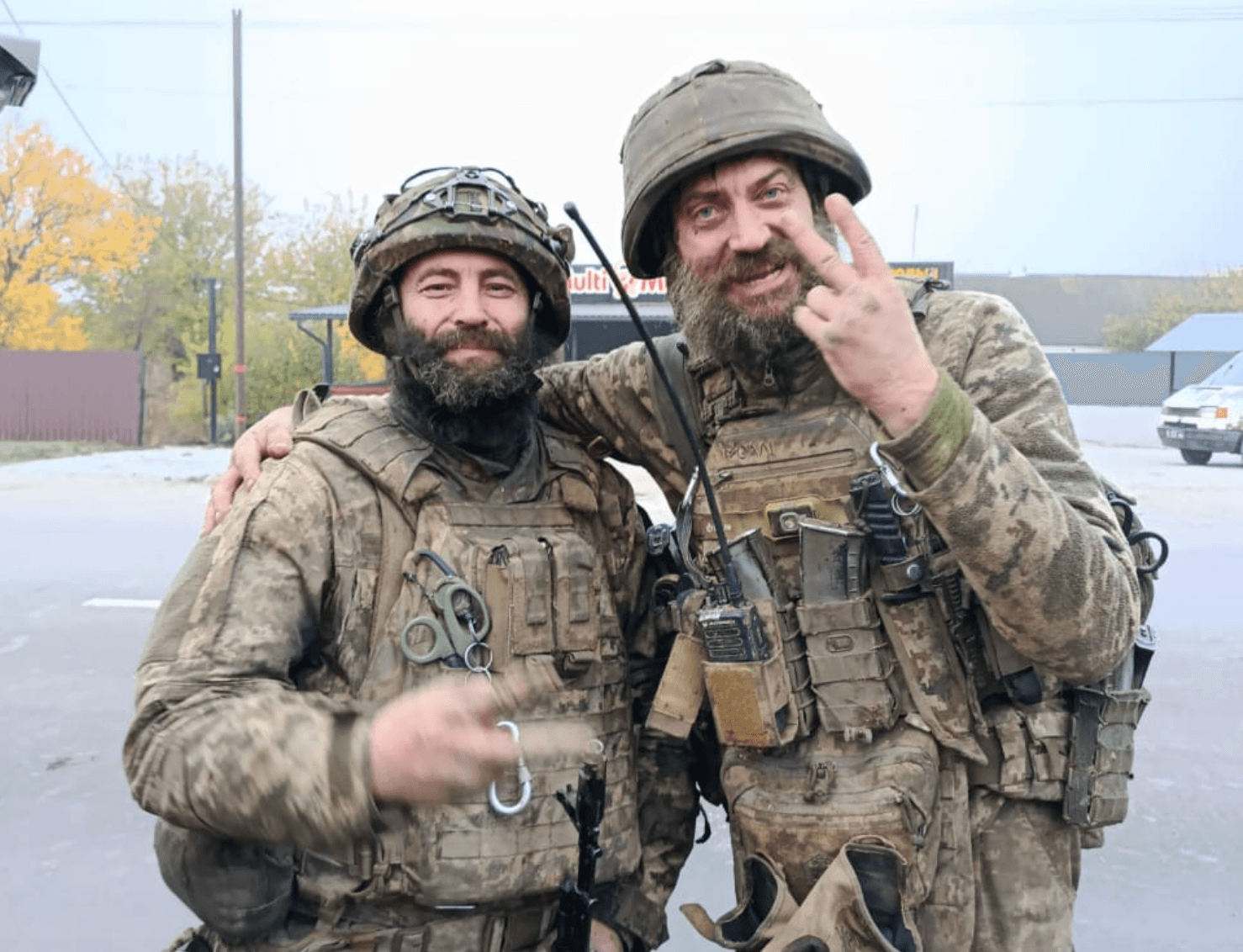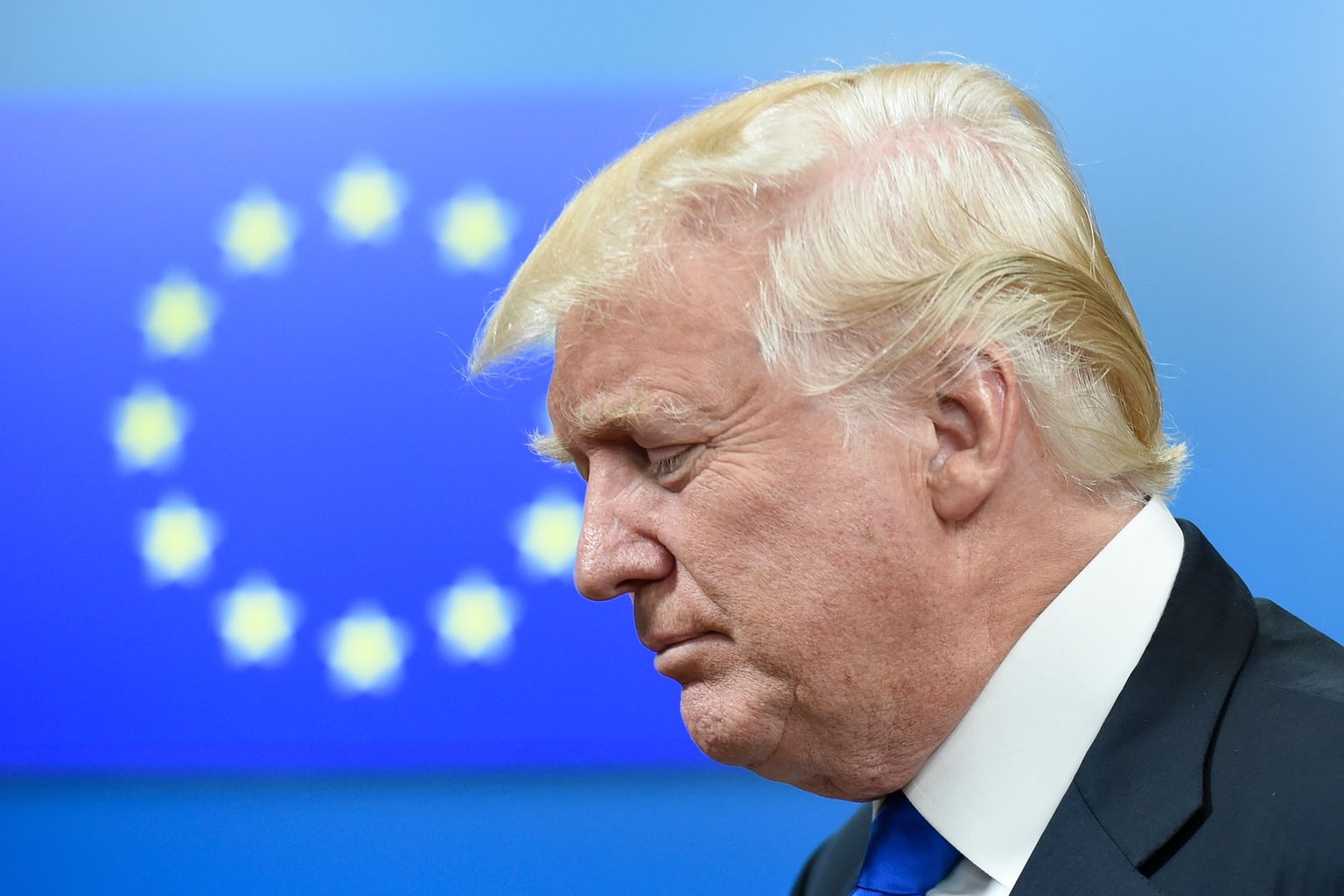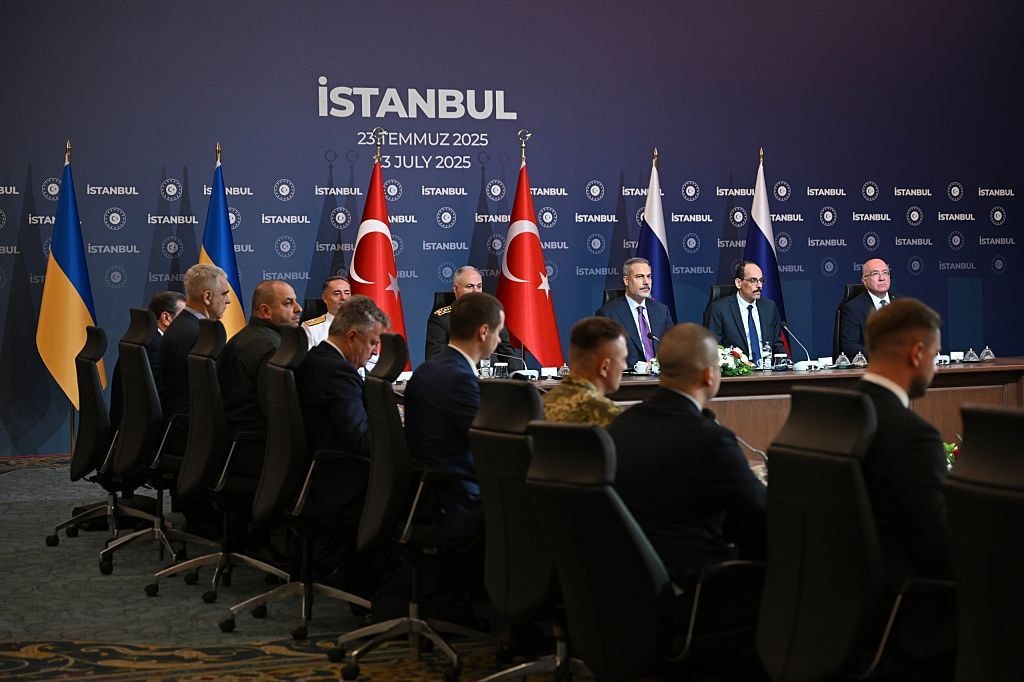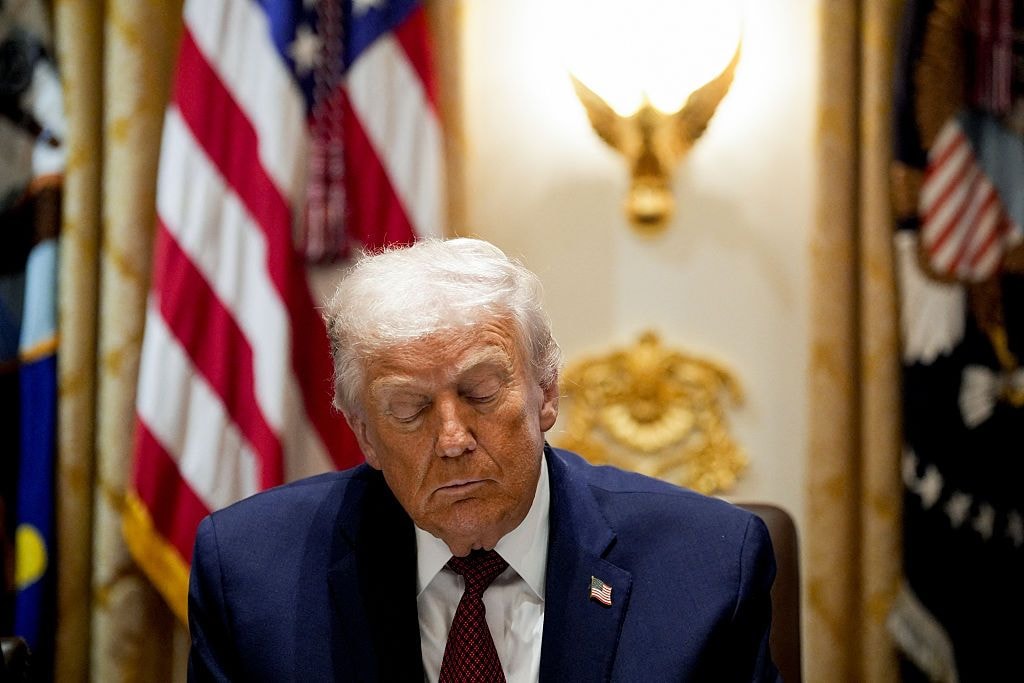
A ceasefire in Ukraine could end martial law — what would lifting restrictions mean?
Trainees take shooting positions during a training session organized by the Third Separate Assault Brigade in Kyiv, Ukraine, on March 15, 2024. (Ashley Chan / SOPA Images / LightRocket via Getty Images)
For nearly three years, all of Ukraine has been living under martial law. The introduction of martial law temporarily suspended some civilian rights and freedoms and gave the government additional emergency powers in order to fight off Russia’s invasion.
Mandatory curfews keep people off the streets at night. Elections are suspended until martial law ends. Military-aged men are restricted from leaving the country unless granted an exception. Financial caps prevent most money from leaving Ukraine.
If the current peace negotiations end in a ceasefire, Ukraine will soon face the question of how and when to lift its martial law restrictions.
The process requires a delicate balancing act. If lifted right away, it could mean an outflow of money and men that may compromise Ukraine’s ability to fend off further attacks if a peace agreement falls apart.
Fedir Venislavskyi, a member of parliament’s Defense Committee and of President Volodymyr Zelensky’s ruling party, said on Feb. 17 that he “does not think martial law can be lifted” on just the basis of a ceasefire without additional security guarantees.
A ceasefire “does not mean that Russia has withdrawn its troops from occupied territories or its means of attack that can strike Ukraine,” Venislavskyi said.
“Given Putin’s mental state, I think we can expect any possible developments. Therefore, without guarantees that this will lead to a lasting peace, I do not think martial law can be lifted,” he added.
Here’s what you need to know about the restrictions currently in place and what lifting them could look like.
What is martial law and what does it mean?
Martial law is a special legal status that introduces military rule, typically imposed in situations of war or other extreme emergencies. The exact specifics depend on the country imposing it.
In Ukraine, people's rights and limitations under martial law are determined by Ukraine’s constitution and a series of laws passed by parliament.
Three key aspects of martial law are the complete suspension of all elections, restrictions on military-aged men traveling abroad with some exceptions, and a mandatory curfew imposed across the country.
Presidential, parliamentary, and local elections are all explicitly banned by the Martial Law Act.
If not for the war, parliamentary elections would have been held in 2023, and President Volodymyr Zelensky’s term would have ended in May of 2024. Their terms have instead continued.
Carrying out elections during the war would require ensuring the safety of polling places, and would need to guarantee the participation of soldiers at the front, refugees abroad, internally displaced civilians, and Ukrainians living in or closest to the fighting.


Because of these challenges, Ukraine and its Western allies agree that holding a democratic election during the war isn’t feasible — something Ukraine’s ambassador to the U.S. recently reiterated in response to comments from U.S. officials calling for elections before the end of the year.
Ukraine has also banned almost all travel abroad for men between the ages of 18 and 60, except with special permission in cases like medical emergencies, business trips, international sports events, or cross-border transportation of humanitarian goods.
Nighttime curfews are in place, requiring everyone to stay inside and off the streets unless issued a special pass. In Kyiv and many major cities, curfew lasts from midnight until 5 a.m. though curfew varies from region to region and typically lasts longer closer to the fighting.
Except for overnight trains, public transport is suspended during curfew. Because workers and patrons need to be inside before curfew, commercial establishments close well in advance of the curfew hour.
These are only a few of the relevant aspects of martial law — the provisions extend far beyond these situations and touch many aspects of Ukrainian life.
For example, public holidays are converted from days off to working holidays, sending money out of the country is restricted, and property can be seized for the needs of the state if reimbursed.
The European Commission consistently has assessed that Ukraine’s martial law has been proportionate overall given the security situation.
When did Ukraine declare martial law?
Ukraine’s martial law has been in place without any interruptions since Feb. 24, 2022, the first day of Russia’s full-scale invasion.
The same evening of the invasion, President Volodymyr Zelensky signed a decree approved by parliament to introduce martial law for a period of 30 days to “ensure Ukraine's defense, public safety and state interests.”
More than a dozen decrees extending martial law have been signed since then — first as 30-day extensions, but now extending it for 90 days at a time.
This period has been Ukraine’s most widespread and lengthiest period of martial law in modern history.
Bills to extend martial law are among those gathering the broadest support across the political spectrum and pass easily. The most recent extension was signed earlier this month and will last until May 9.
While this period has been Ukraine’s most widespread and lengthiest period of martial law in modern history, it’s not the country’s first.
Former President Petro Poroshenko temporarily imposed martial law in 2018, following the Kerch Strait Incident, in which Russian ships opened fire at three Ukrainian naval boats crossing the Kerch Strait. It was the first time that Russian forces attacked Ukraine openly while identifying themselves as Russian, rather than hiding behind proxy forces.
In that case, martial law was only applied to limited regions in the east and was not renewed after the 30-day period expired.
When and how will martial law end in Ukraine?
A ceasefire alone is unlikely to convince Ukrainian officials to end martial law, and it won’t trigger an end automatically.
Ukraine’s parliament will need to decide whether it is safe to lift martial law and then choose not to extend it when it expires or vote to lift it.
The exact timing and structure of martial law’s end will depend on the outcome of the ongoing peace negotiations, including Ukraine’s confidence in whether Russia is likely to attack again.
When restrictions lift, there will likely be a rapid outflow of people and money that were previously barred from leaving the country.


Around a fifth of Ukrainians say they would want to move abroad if travel restrictions were lifted, according to a poll published last month by the Ilko Kucheriv Democratic Initiatives Foundation and the Razumkov Center.
Those numbers were higher for men and young people — with a quarter of men and a third of Ukrainians between the ages of 18 and 29 saying they would want to move.
Such a substantial outflow would significantly weaken Ukraine’s military readiness if the ceasefire is violated and hostilities resume.
Separately, a sudden complete lifting could destabilize the country in other ways, like aggravating the current labor shortage.
One potential arrangement could be Ukraine gradually easing restrictions overtime after a ceasefire is reached and security guarantees are in place.


